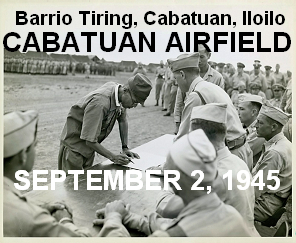
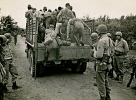

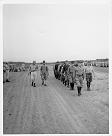


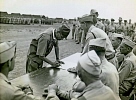
Col. Ryoichi Tozuka signs the surrender instrument
as Col. Raymond G. Stanton looks on.
Cabatuan Airfield
Barrio Tiring, Cabatuan, Iloilo
Panay Island, Philippines, September 2, 1945
|
|
- o -
|
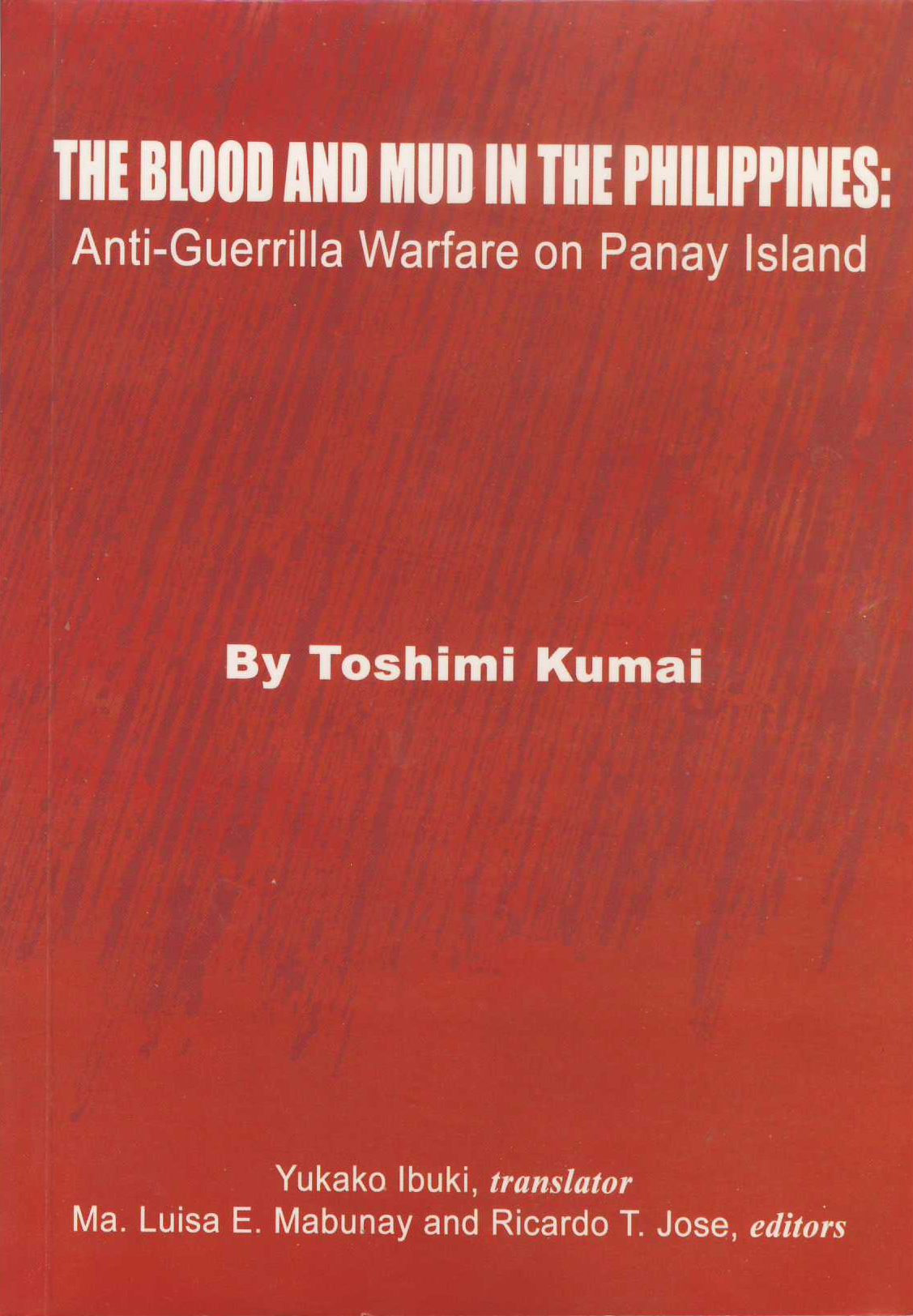
The Blood and Mud in the Philippines
Anti-Guerrilla Warfare on Panay Island
by Toshimi Kumai
Yukako Ibuki, translator
Ma. Luisa E. Mabunay and Ricardo T. Jose, editors
|
|
5.3 In Search of Wireless Radios
Towards the end of October 1943, a punitive force was to mop up Mt. Nacron of the town of Alfonso Doce in Capiz province, targeted as the guerrillas’ communication headquarters. The goal was to get hold of the wireless RM5 as well as to arrest Colonel Peralta and Major Amos Francia, the District Signal Officer. Everyday, the punitive force captured scores of people, interrogated them, and then let them lead the way at night to the likely hiding places they knew. However, these moves were always in vain.
At one time, Captain Watanabe got angry and ordered the execution of more than ten guerrilla suspects. Everyday, he took some to a nearby riverbank and beheaded them. Soldiers shot some of those who tried to escape by jumping into the river. The punitive forces gathered information, acted on it, and imposed a lot of hardship and sacrifice on the local residents. They went up along the Aklan River and approached the communications headquarters at Mt. Nacron. A member of Hajime Fujii’s unit accidentally stumbled on something, and they ended up digging up 50 to 60 rifles buried in tin drums. This happened in the middle of the fierce rainy season, in mountain ranges where the aboriginal people of Panay lived. An unfortunate aborigine guided us to an empty house where we found a pair of small-sized high-heeled shoes, an indication that the place had been a guerrilla base. The punitive forces captured the village leader near Alfonso Doce and 200 villagers were forced to look for buried radio equipment. They became eager when we gave them bank notes issued by the Confesor government and even offered a shirt as reward for anyone who found something. In the end, we found various parts that made up a few large radios.
In these mountains, the troops ran out of food and ate anything they could find, including a serpent found near the Aklan River. At the town of Kalibo, which had not been burnt by the guerrillas, people showed allegiance and welcomed the Japanese forces. After the five-month expedition, we all felt relieved. The most excited were Filipino spies and porters of the Japanese Army who had robbed residents or even raped women. At the Army headquarters in Kalibo, the courteous and English-speaking Sergeant Matsuzaki tried to reason with them. Vicente Morata, one of those spies for the Japanese, who respected Matsuzaki, tearfully apologized. After a short time, however, he forgot his remorse and did wrong again!
|
|